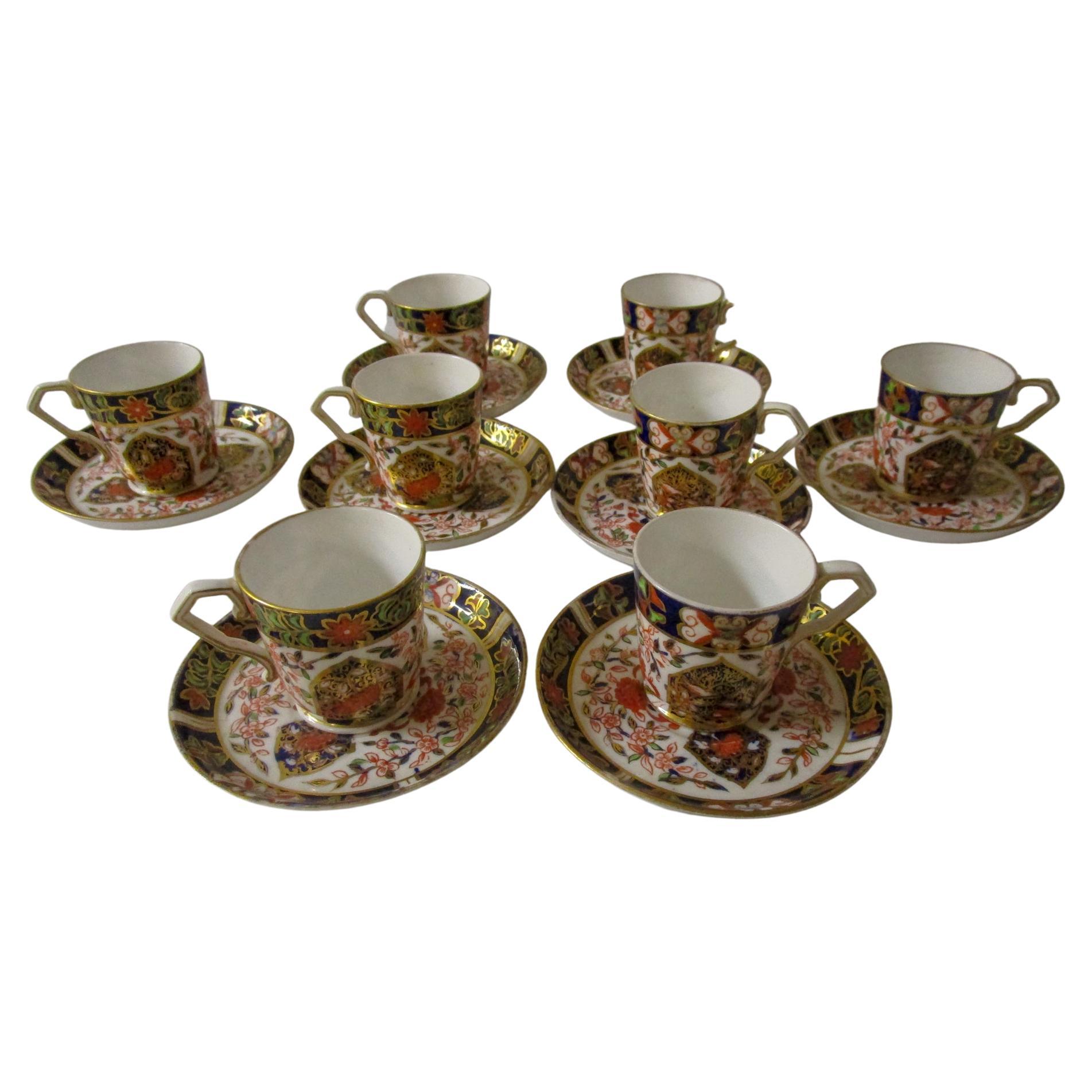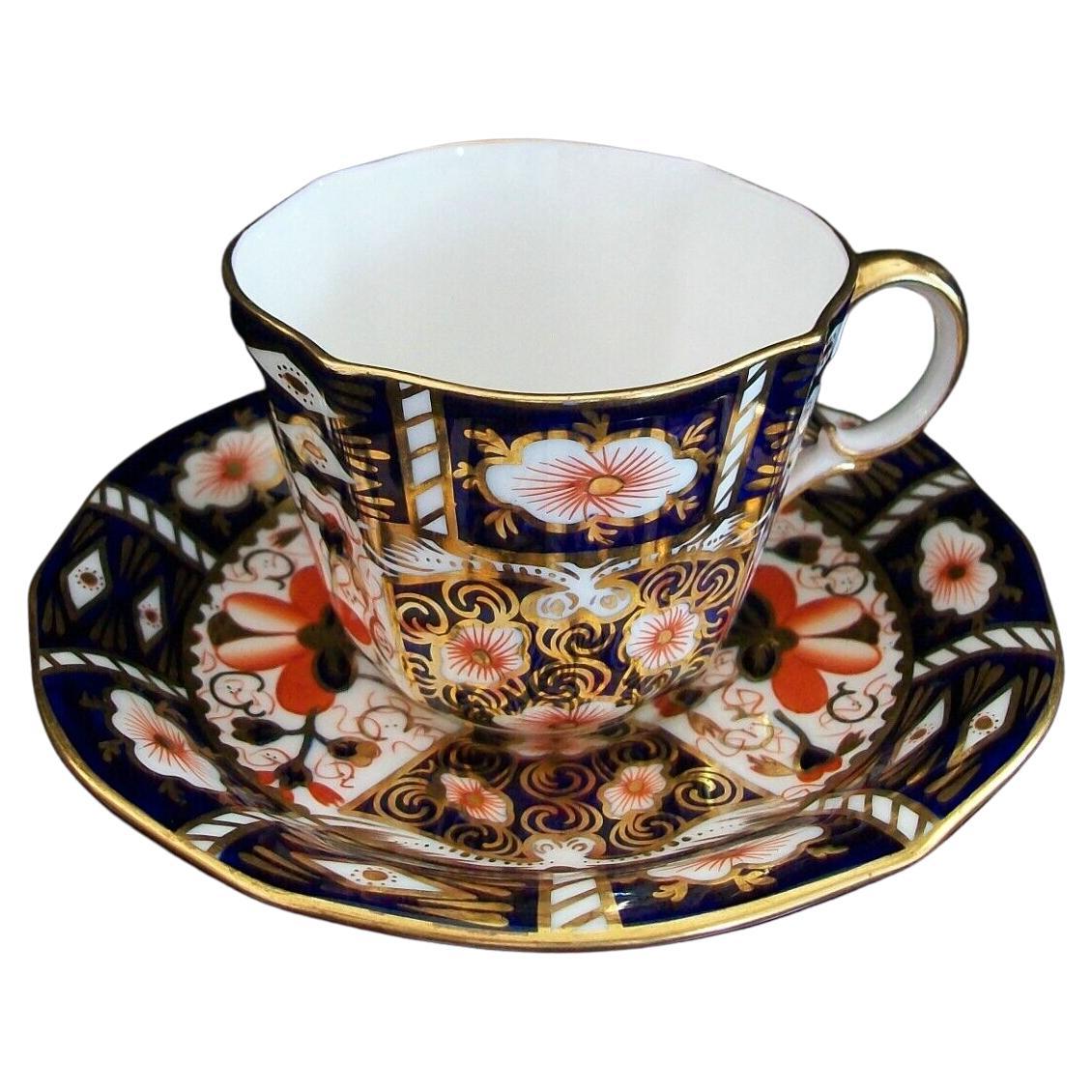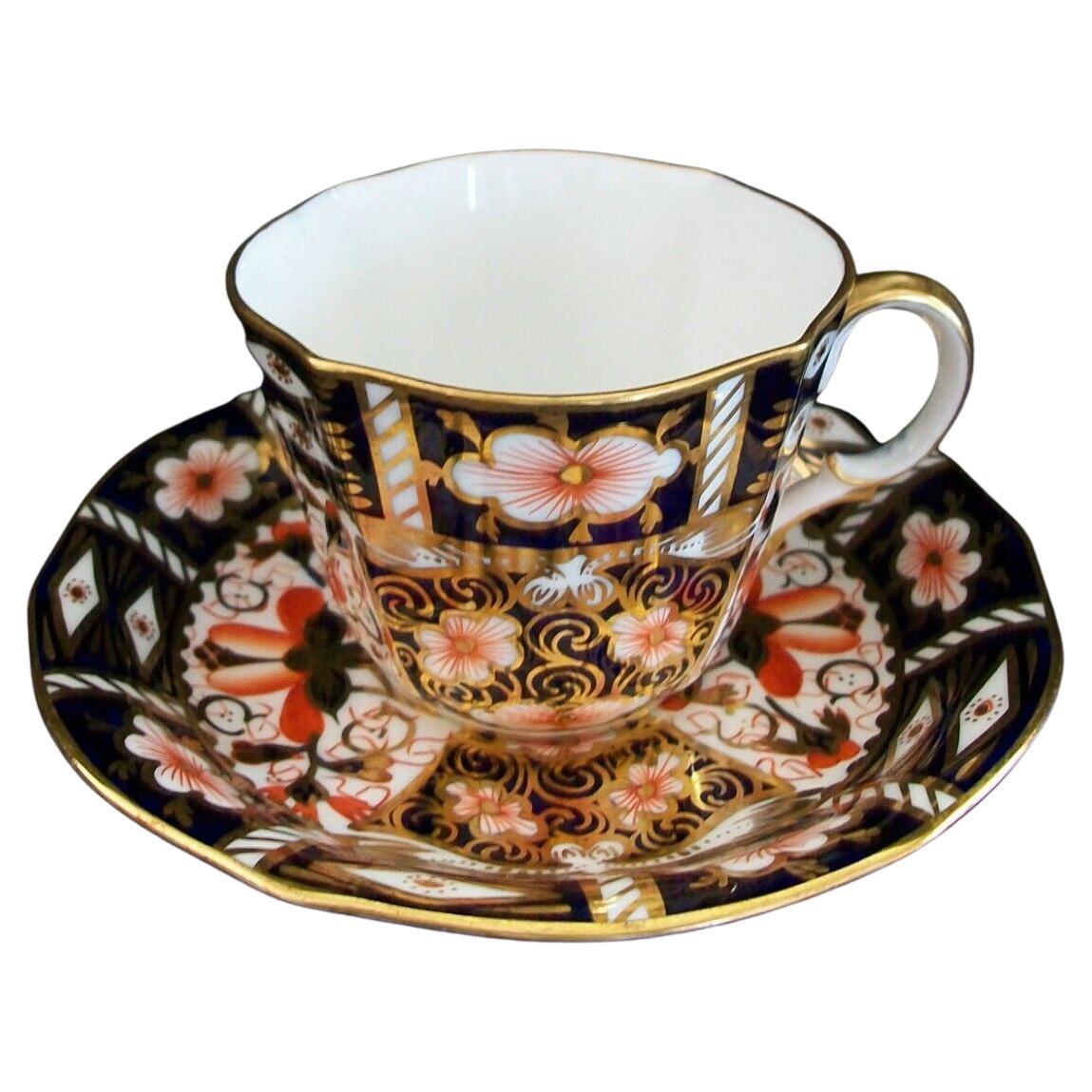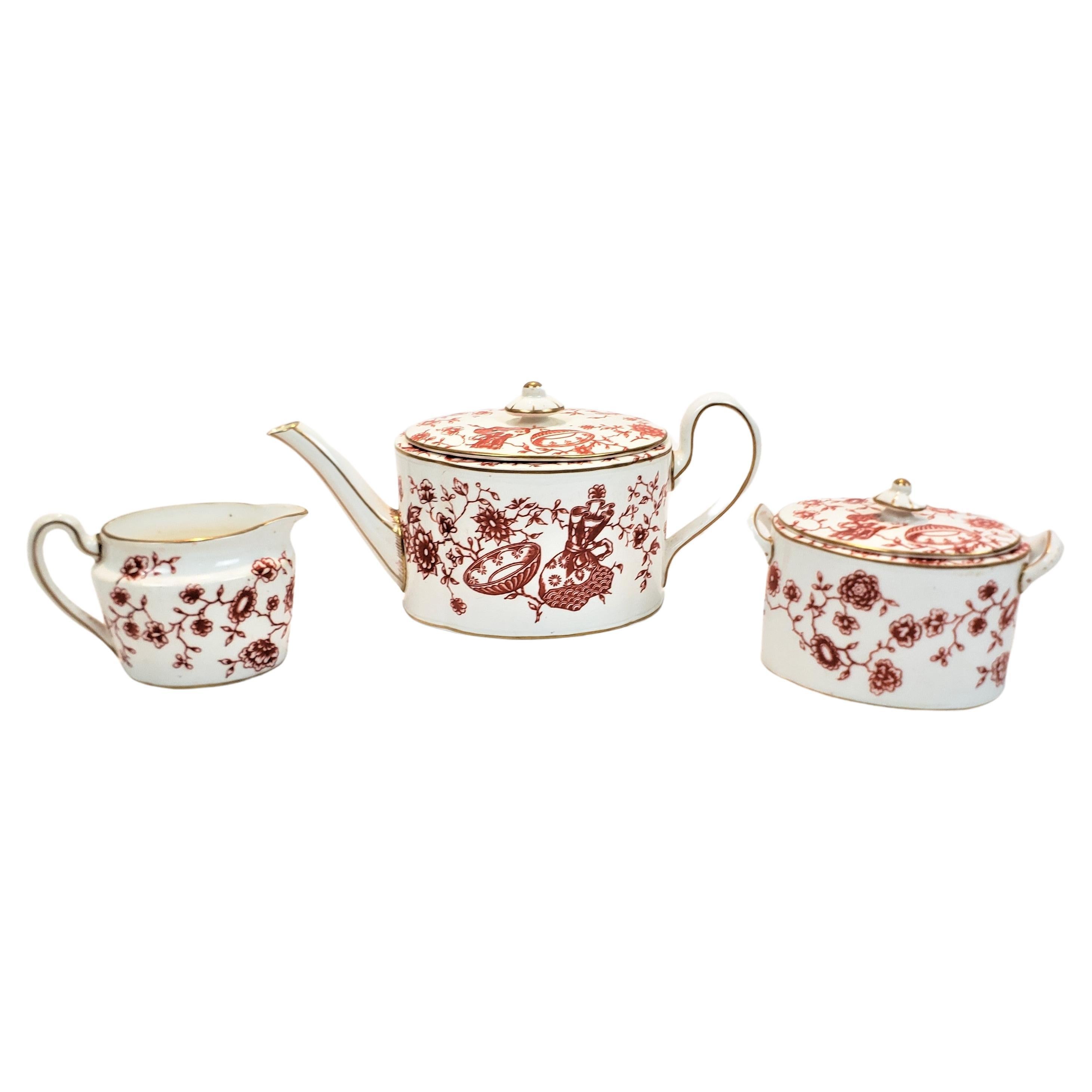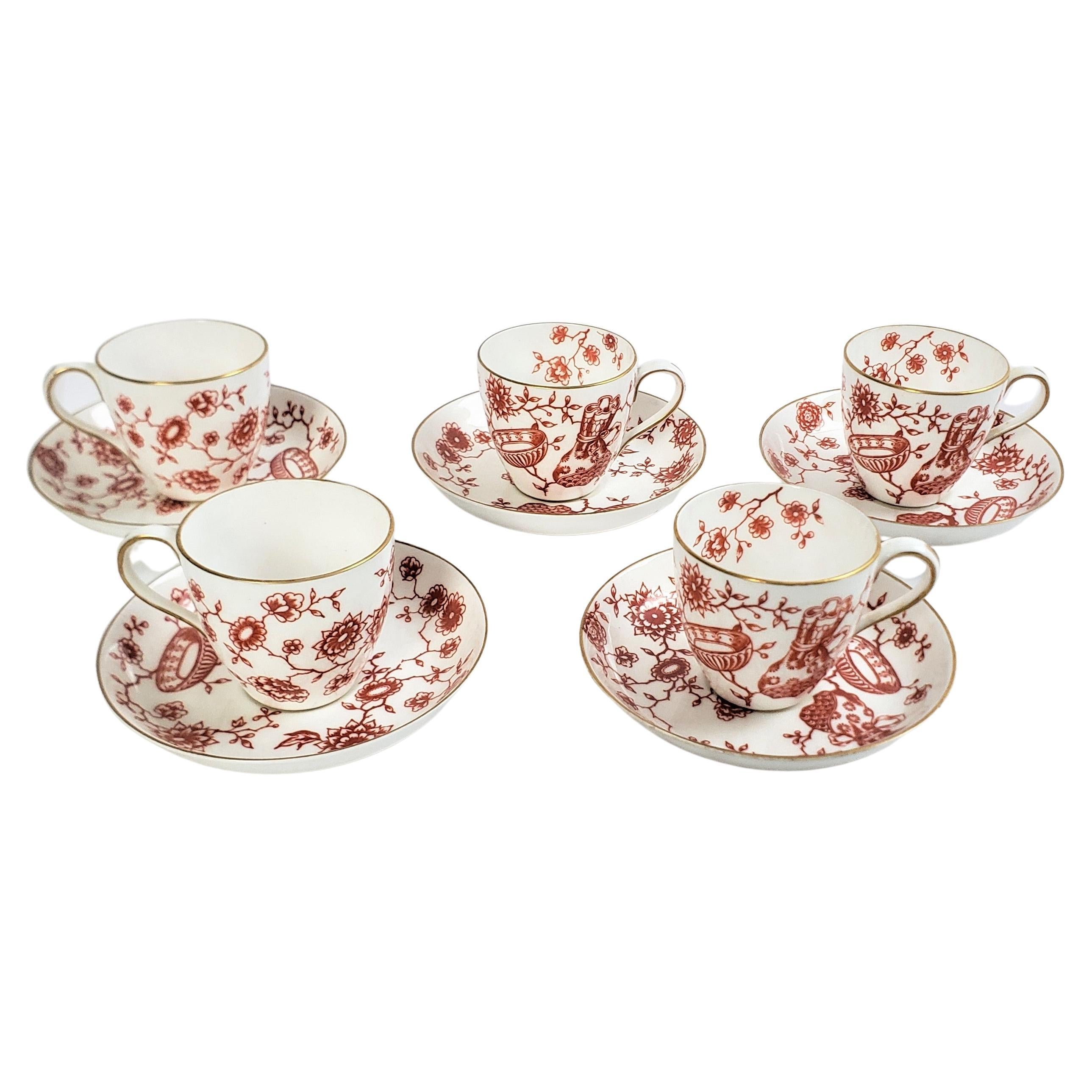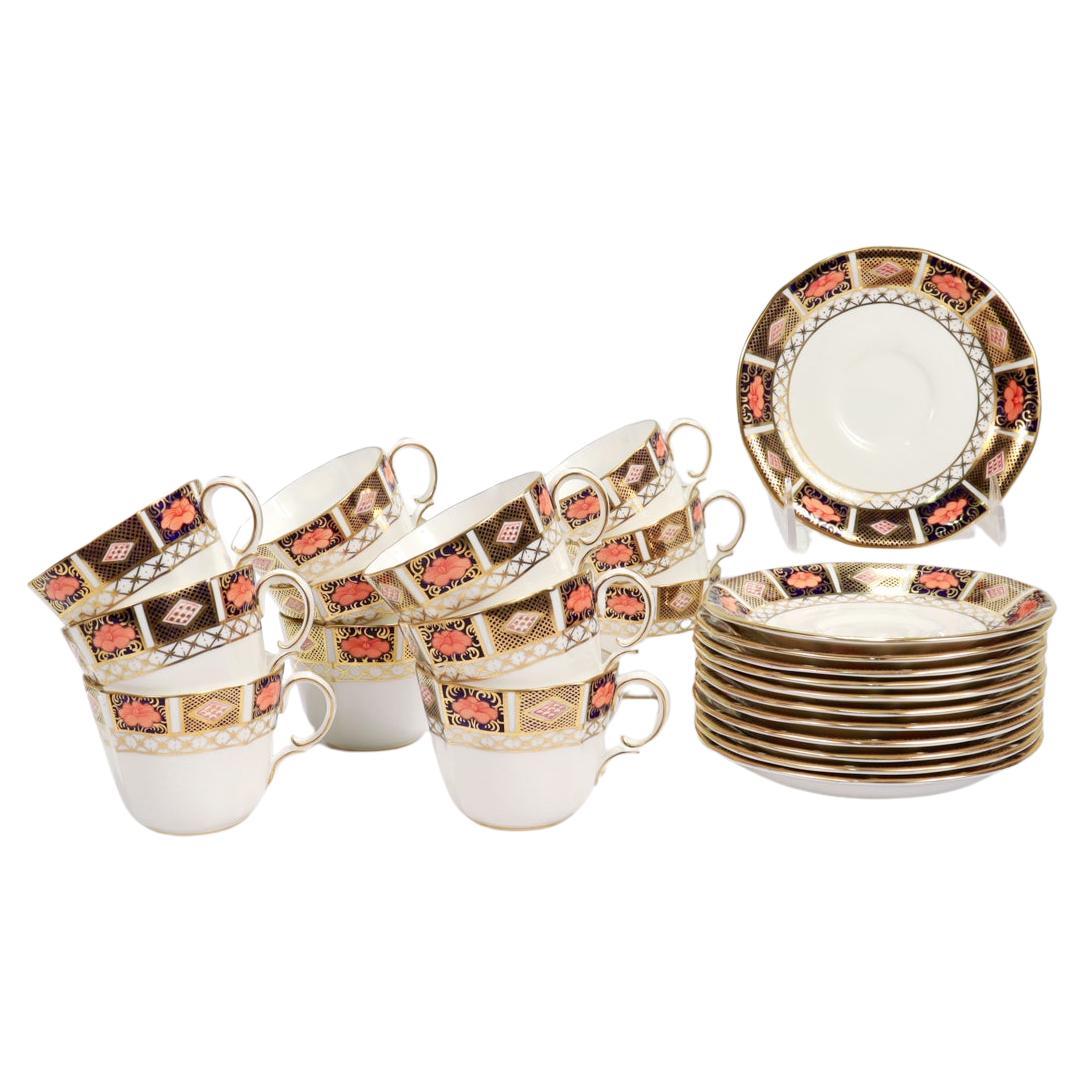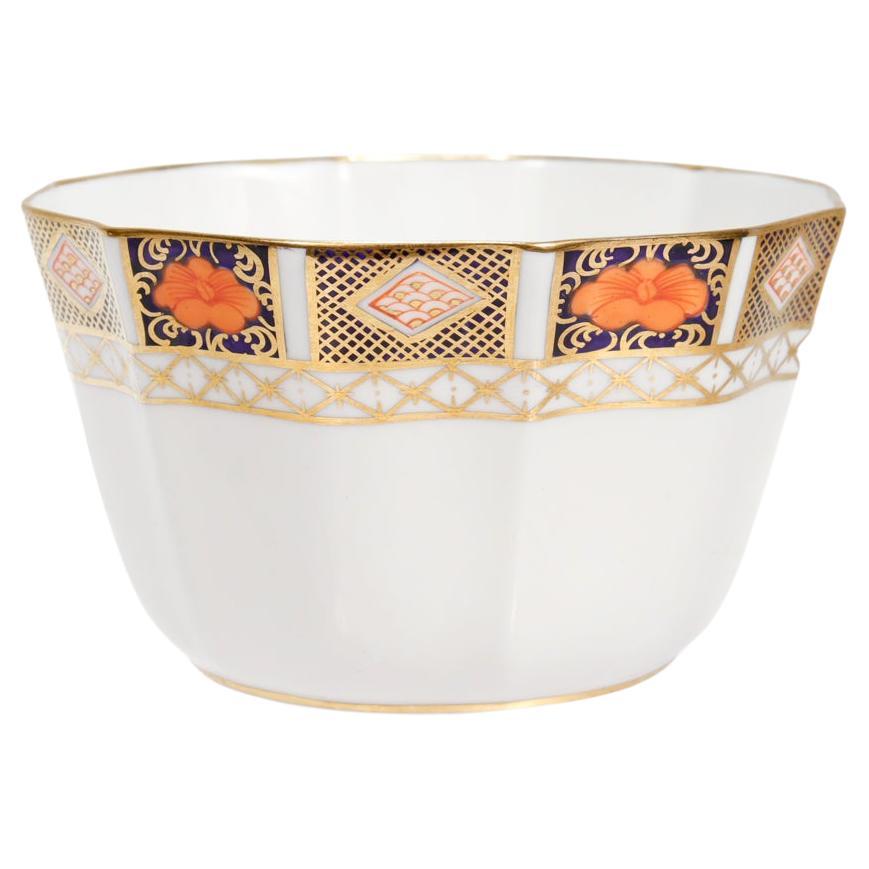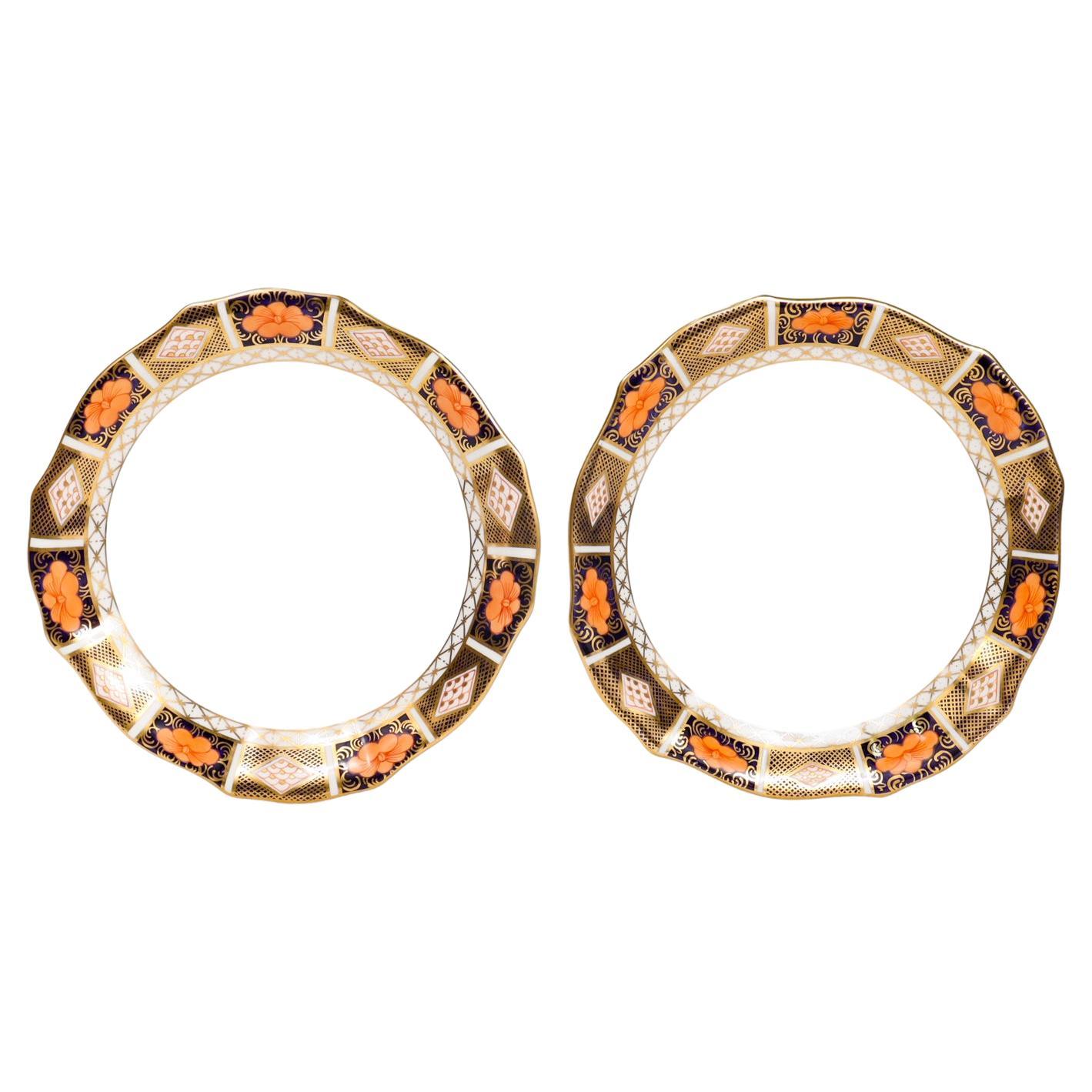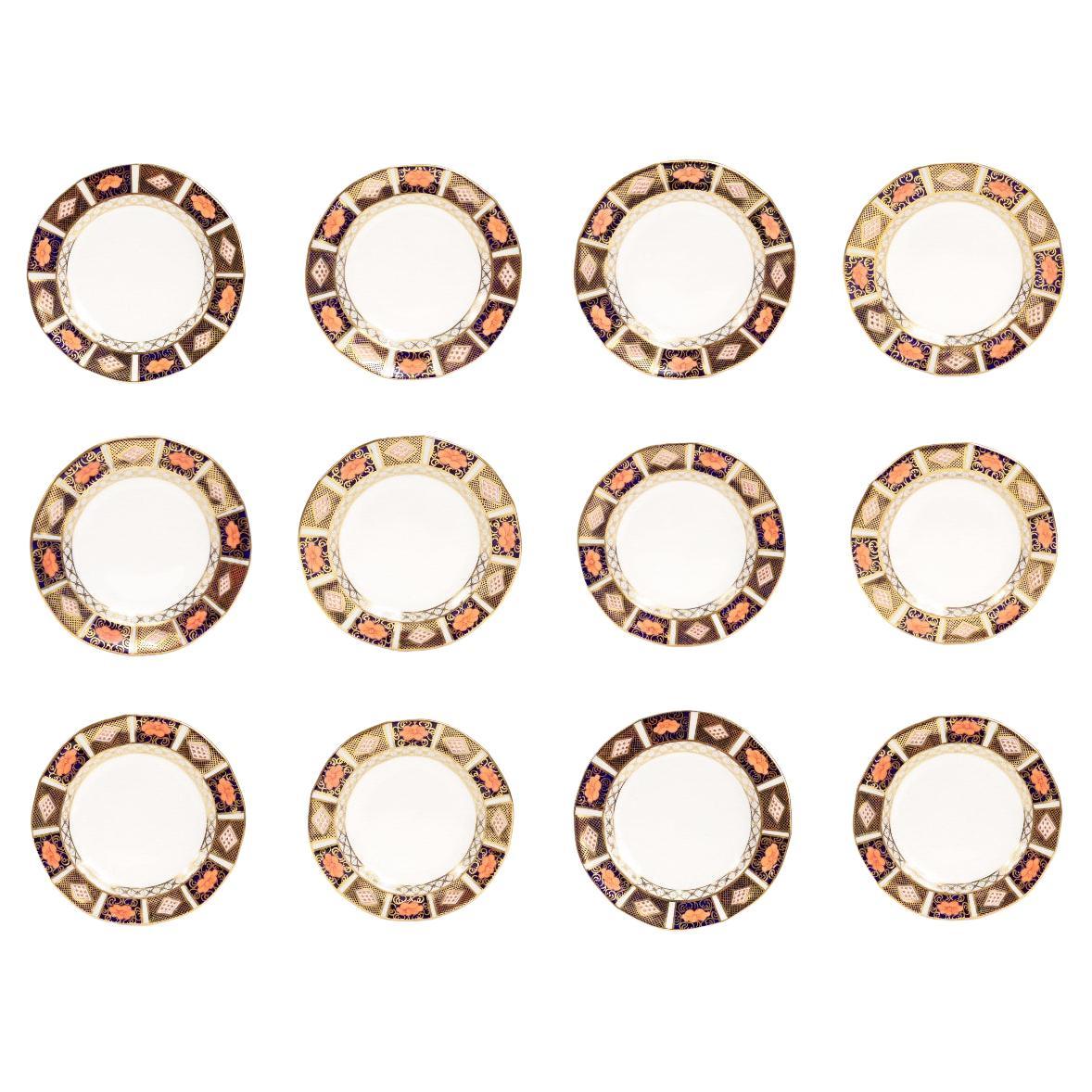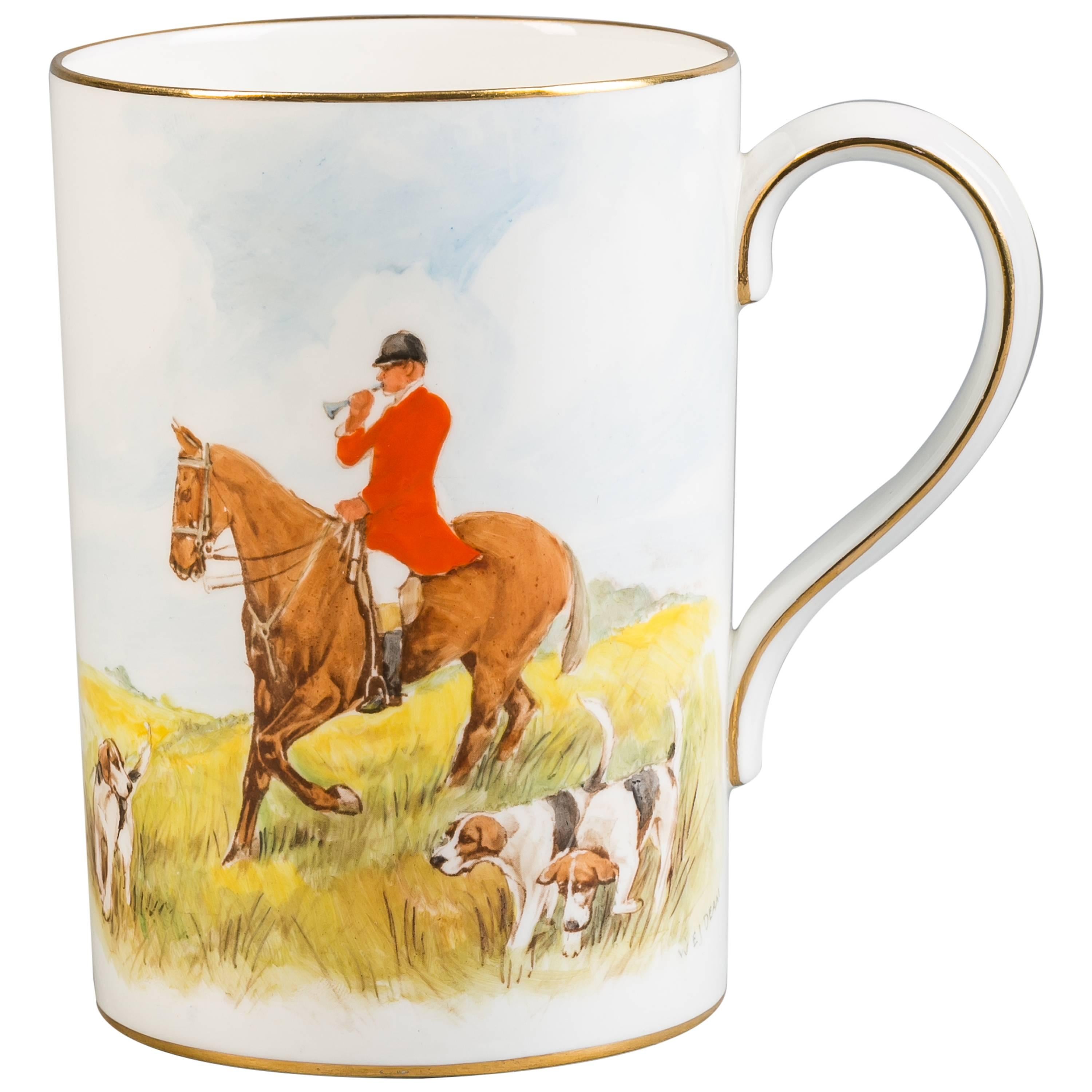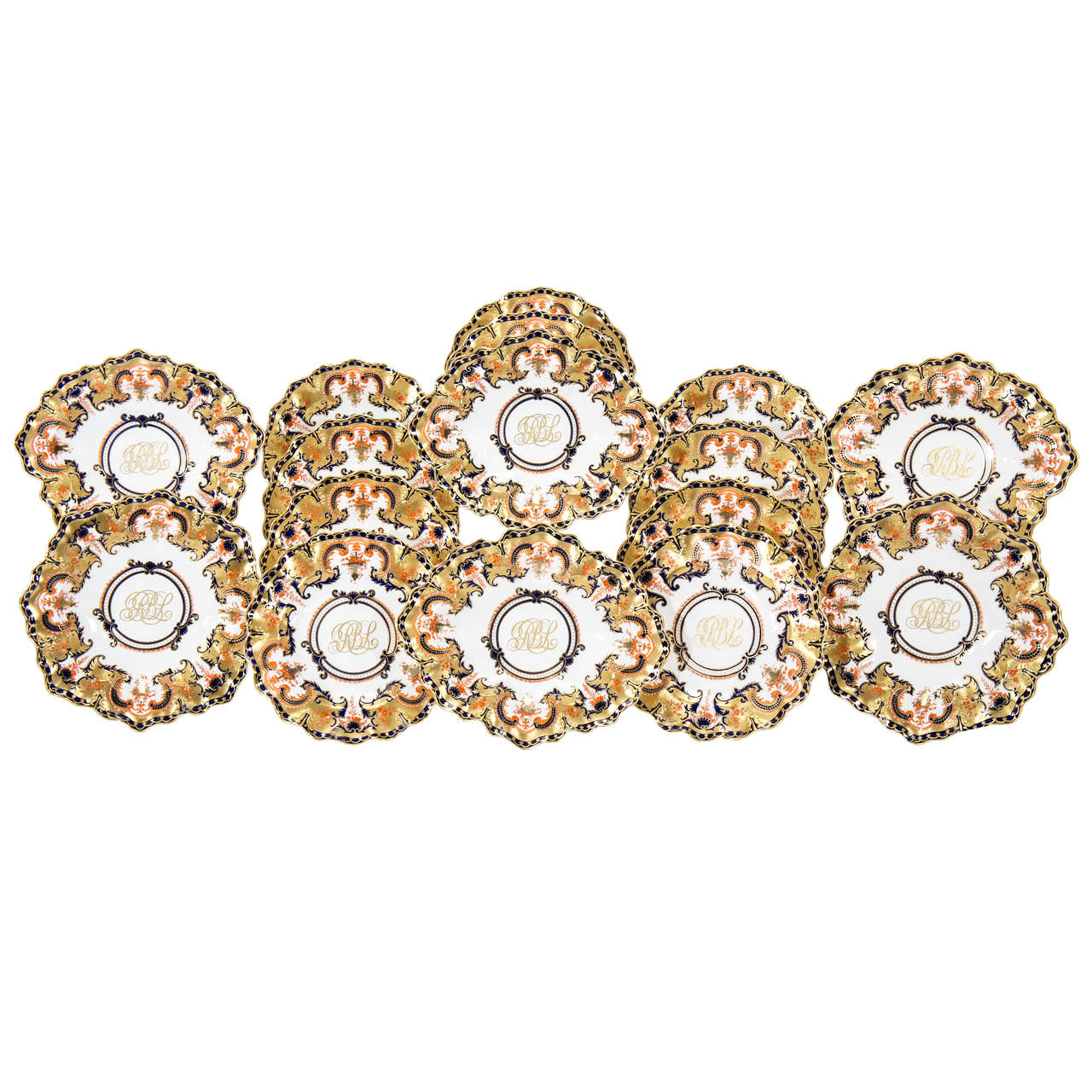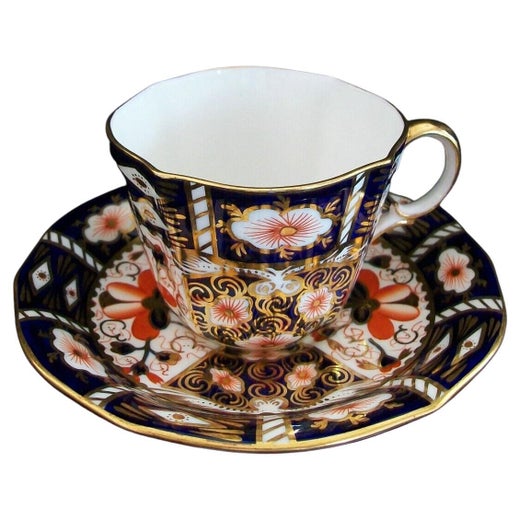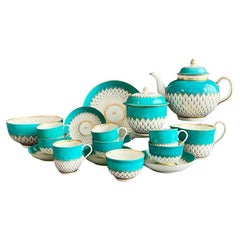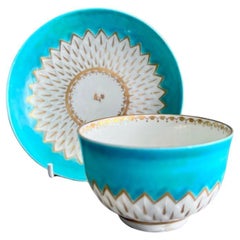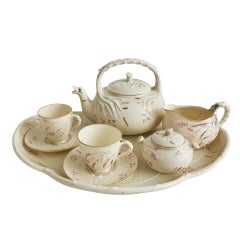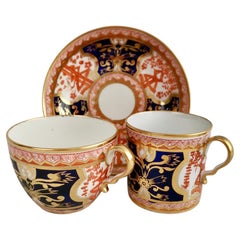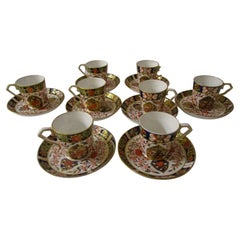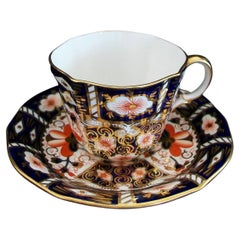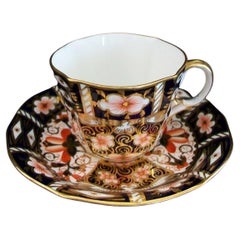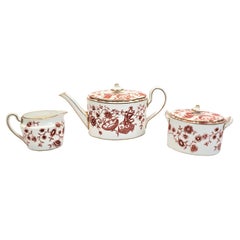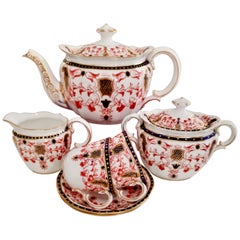
Royal Crown Derby Breakfast Tea Set, Imari Pattern, 1899
View Similar Items
Royal Crown Derby Breakfast Tea Set, Imari Pattern, 1899
About the Item
- Creator:Royal Crown Derby Porcelain (Maker)
- Dimensions:Height: 1 in (2.54 cm)Width: 1 in (2.54 cm)Depth: 1 in (2.54 cm)
- Sold As:Set of 9
- Style:Late Victorian (Of the Period)
- Materials and Techniques:
- Place of Origin:
- Period:
- Date of Manufacture:1899
- Condition:Wear consistent with age and use. Very good condition, very minor rubbing and one professional repair.
- Seller Location:London, GB
- Reference Number:Seller: A-DER101stDibs: LU4805116849992
Royal Crown Derby Porcelain
Founded in 1750 by Andrew Planche and William Duesbury in Derby, England, the Royal Crown Derby Porcelain Company is one of the oldest original English manufacturers of fine bone china. Dating to the Georgian era, it has operated for more than 265 years.
In 1761, the company, then called Derby Porcelain, created its first commemorative piece for the coronation of King George III. In 1775, King George III recognized the uniqueness and high quality of Derby Porcelain, giving the company the honor of using a crown on its back stamp. Queen Victoria gave further honors to the porcelain manufacturer in 1890, when she awarded the company a royal warrant and bestowed upon it the title of “The Royal Crown Derby Porcelain Company.”
In the years following the first royal appointment, the company employed some of its finest artistic creators, such as watercolor landscape painter Zachariah Boreman; flower painters William Billingsley, William Pegg and Walter Withers; and figure painters Richard Askew and James Banford. The company produced the most sought-after collectible pieces in its history under the direction of William Duesbury II. He died at 34 and his full vision for the company went unrealized; it subsequently entered a period of decline.
In 1811, Robert Bloor revived the company by employing excellent painters and producing exquisite serving pieces that featured the Japanese Imari style of bold colors and lavish details. The popular design continues to be produced today. Modern pieces such as the paperweight collection also remain in demand more than 40 years after their introduction.
Under the creative control of different partners over time, the company has had three main locations. Its current base of operations is in Derby, where it continues to produce fine ceramics and decorative collectibles.
On 1stDibs, find a selection of Royal Crown Derby Porcelain Company bowls and baskets, dinner plates, centerpieces and more.
More From This Seller
View AllAntique 1780s English George III Tea Sets
Porcelain
Antique 1780s English George III Tea Sets
Porcelain
Antique Late 19th Century Northern Irish Victorian Tea Sets
Porcelain
Antique Early 1800s English Regency Porcelain
Porcelain
Antique Late 19th Century Northern Irish Victorian Tea Sets
Porcelain
Vintage 1910s English Edwardian Porcelain
Porcelain
You May Also Like
Antique 1880s English Chinoiserie Porcelain
Porcelain
Mid-20th Century English Victorian Tea Sets
Ceramic
Early 20th Century English Victorian Tea Sets
Ceramic
Antique Mid-19th Century English Chinoiserie Tea Sets
Porcelain
Antique Mid-19th Century English Chinoiserie Tea Sets
Porcelain
Vintage 1960s English Regency Porcelain
Porcelain
